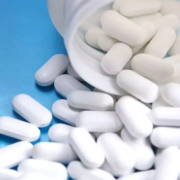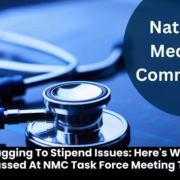
Thiruvananthapuram: The Kerala State Consumer Disputes Redressal Commission recently directed Malappuram-based hospital and its doctor to pay Rs 50 lakh as compensation to a woman who gave birth to a child with 90% locomotor disability. It was alleged that neither the hospital nor the doctor had even given her any indication regarding the abnormality of the child before delivery despite repeated scans.
While considering the matter, the State Consumer Court had set up a Medical Board, which had opined that the doctor had not exercised reasonable skill while conducting the ultra-sound scan. The Board had opined that if the doctor had exercised reasonable skill, the deformity could have been detected at the scan done when the gestation age was sixteen weeks.
Considering the Medical Board’s opinion, the SCDRC directed the hospital and doctor to pay Rs 50 Lakh as compensation and Rs 50,000 as cost of litigation to the complainant.
The case goes back to the year 2007 when the patient was under the observation and treatment of Dr. G. Menon for her pregnancy-related complications. Earlier she had delivered two babies through caesarean surgeries but both the babies were born with ‘down syndrome’ and the babies had died within a few days after being born. After being advised by various doctors about the risks of the third delivery, the complainant started taking advice and treatment from the treating doctor’s hospital to avoid such complications.
As suggested by the doctor, the patient and her husband underwent ‘Chromosonal Analysis’, which showed that there were no abnormalities. Therefore, considering the doctor’s advice, she became pregnant and after her conception, at each stage, the complainant made inquiries regarding the status of the foetus to ensure that abnormal foetus could be aborted at the earliest stage. She submitted that this was her last chance to undergo a caesarean surgery for delivery as both of her earlier deliveries were through caesarean sections.
She underwent scanning during the tenth, sixteenth, and twenty-first weeks of her pregnancy at the treating hospital and the results were stated to be normal with no abnormalities being detected. On 09.02.2007, the doctor and his team conducted a Chromosome Analysis for the foetus and no abnormalities were detected.
There were no abnormalities even in the scannings taken in the twenty-sixth, thirtieth, and thirty-fifth week of pregnancy. Finally, the complainant opted for a caesarean operation to ensure a safe delivery as no complication or abnormality was detected by the doctor and the hospital or communicated to her.
However, the patient was shocked to find out that a baby boy she delivered had abnormally formed limbs. She claimed that the said consequence was only due to the gross negligence and deficiency in service of the doctors who treated her. It was alleged that the hospital and doctor had promised the patient that she would be adequately compensated by the payment of a lump sum amount or an annual payment if the child survived one year. However, that promise was allegedly not honoured by the hospital and the doctor.
As per the complainant, the child survived for more than one year and required constant attention and care of an attendant. She claimed that had the deformity of the foetus been detected at an early stage, the complainant could have undergone an abortion. Therefore, filing the consumer complaint, the patient prayed for Rs 50 lakh compensation for deficiency in service and for the mental agony and suffering.
On the other hand, the hospital and the doctor submitted that they had been referred to the doctor as an expert to rule out the chances of Down syndrome by advanced medical and scientific methods. Accordingly, the doctor advised the complainant and her husband for Karyotype as an accepted method to rule out chromosomal problems that can cause recurrent Down syndrome. He referred to the other scanning and tests that were conducted to rule out the possibilities of abnormalities and submitted that all the results were found to be normal.
It was also submitted that even though the complainant was asked for scans within 18 to 22 weeks of gestation to rule out any abnormalities other than Down syndrome, the complainant did not turn up for the same and expressed that she only wanted to rule out the chances of down syndrome since believed that her previous two babies were lost due to down syndrome. They claimed that the treatment given to the complainant was as per the standard medical practice.
During the pendency of the complaint, the State Consumer Court had set up a Medical Board on 18.11.2009 and the Board examined the medical records of the complainant as well as the child born to her. The panel noted that the child’s right forearm was absent and the right hand had a rudimentary nodule over the right medical aspect of the right stump. The left forearm was missing and the right leg appeared short with talipes deformity of the rudimentary food. The child’s left leg is marked by short with a rudimentary foot.
Taking note of these deformities, the Panel noted except for the limb anomalies his growth and mental development were normal. Therefore, the Committee opined that “these anomalies should have been detected by the ultra sound scan done at sixteen and twenty two weeks gestation. The gross limb anomalies like absence of forearm and legs should have been detected by the ultra sound scans, if Dr.*** Menon had exercised reasonable skill; especially since the liquor volume was normal.”
Referring to the Panel’s report, the Consumer Court noted,
“The above conclusion of the Medical Board categorically finds that the 2nd opposite party had not exercised reasonable skill while conducting the ultra sound scan. Had reasonable skill been exercised by the 2nd opposite party, the deformity could have been detected at the scan done when the gestation age was sixteen weeks.”
Accepting the Medical Board’s opinion, the Consumer Court observed,
“Since the Medical Board had actually examined the child and the medical records of the case and concluded definitely that the deformities could have been detected at an early date, had reasonable skill been exercised by the 2nd opposite party while conducting the ultra sound scan, the actual causes of the deformities are not necessary to be enquired into, any further. The Medical Board having been constituted with eminent persons holding responsible positions and having expertise in their specialised fields were the best persons capable of evaluating the treatment provided, assessing whether reasonable skill had been exercised and identifying the lapses that were alleged to have occurred. Since they have categorically concluded that the deformities could have been detected, had the 2nd opposite party exercised reasonable skill while conducting the ultra sound scan, we accept the said conclusion.”
Therefore, the Commission concluded that it was due to the omission on the part of the doctor to exercise reasonable skill while conducting the ultrasound scan of the complainant that the deformities of the child born to her were not detected sufficiently early. Due to this, a deformed child suffering from ninety per cent loco-motor disability was born to the complainant, completely upsetting her normal life.
“Since the child requires her constant attention and care, she has been prevented from taking up any employment. Her desire to have a normal healthy child was also shattered. The magnitude of the damage to her life is manifold and therefore she seeks compensation. The difficulty of looking after a child like that of the complainant, born with a severe loco-motor disability estimated at ninety percent cannot be overstated, as contended by the counsel for the complainant. The child would require assistance even for answering its calls of nature. As it grows up, the difficulties would only increase many fold. The prospect of educating the child or even looking after the child properly would be impossible without the assistance of a caring, trained and responsible person. The services of such a person would be difficult to obtain and would certainly entail substantial expenditure. The burden of looking after the child has been cast on the complainant in spite of all the efforts taken by her to obtain medical feedback with respect to the health condition of the child, solely because of the deficiency in service on the part of the opposite parties. Since the 2nd opposite party was at that time working with the 1st opposite party hospital, the 1st opposite party is also vicariously liable for the losses caused to the complainant,” noted the Commission.
The Commission examined the photographs of the child and noted that the child requires constant attention and care. Considering the difficulties in bringing up a child suffering from such deformities, the Commission allowed the compensation sought in full.
It directed the hospital and the doctor to pay Rs 40 lakh as compensation for deficiency in service and negligence with interest @8% per annum from 13.07.2009, Rs 10 lakh for mental agony and sufferings caused to the complainant with interest @8% per annum and Rs 50,000 as litigation cost to the complainant.
“Both the opposite parties are directed jointly and severally pay to the complainant an amount of Rs.40,00,000/-(Rupees Forty Lakhs only) as compensation for the deficiency in service and negligence with interest thereon @8% per annum from 13.07.2009 the date of filing the complaint. Both the opposite parties are held jointly and severally liable to compensate the complainant for the mental agony and sufferings caused to her by paying an amount of Rs.10,00,000/-(Rupees Ten Lakhs only) with interest thereon @8% per annum from the date of filing the complaint. The opposite parties are directed jointly and severally pay a further amount of Rs.50,000/- (Rupees Fifty Thousand only) as the costs of litigation to the complainant,” the Commission ordered.
To read the order, click on the link below:
https://medicaldialogues.in/pdf_upload/rs-50-lakh-compensation-239833.pdf
Also Read: Ovary Removed Sans Consent, Mop pad left inside Abdomen: TN Private Hospital Doctors Told to Pay Rs 25 Lakh Compensation


















